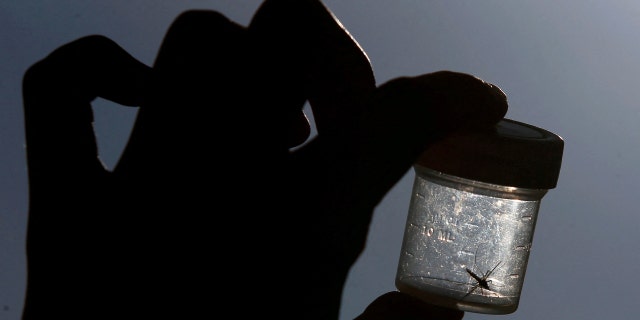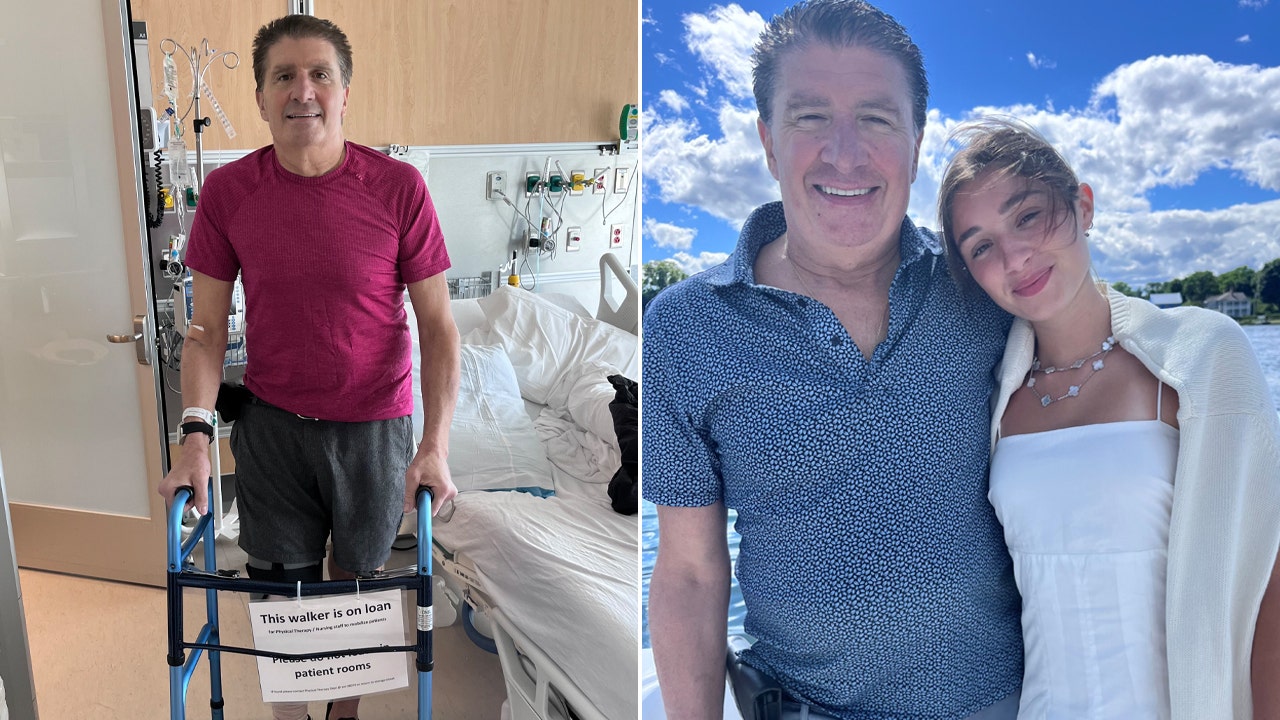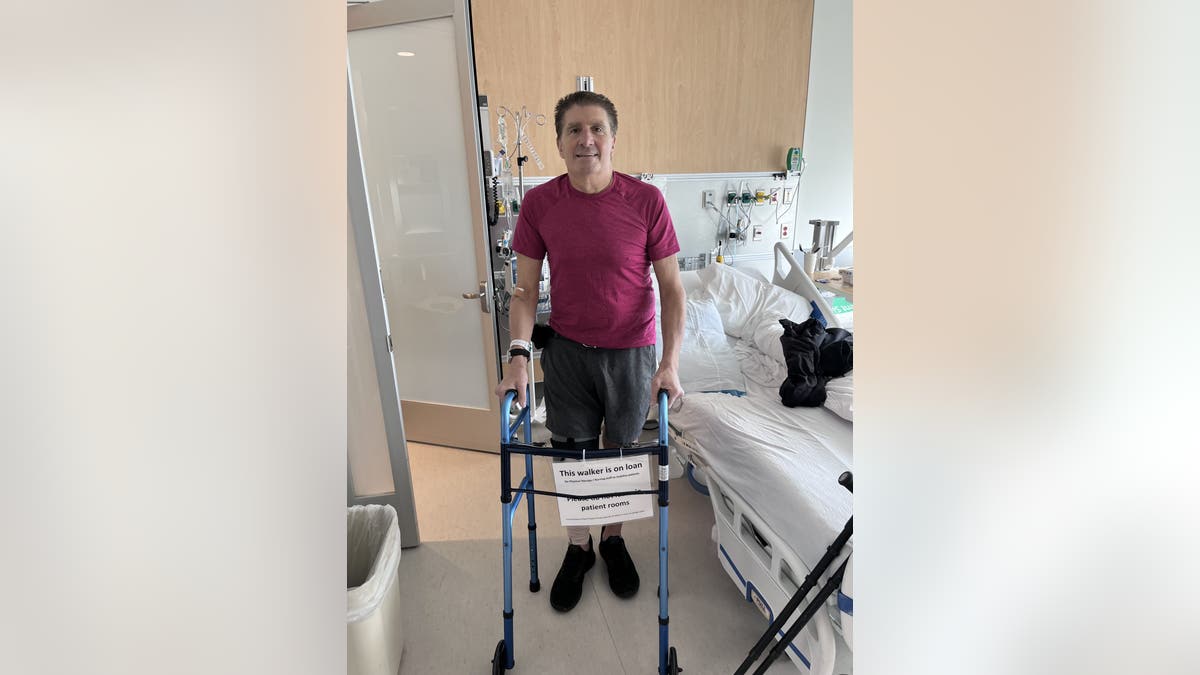Health
First US malaria cases diagnosed in decades: What to know about the disease

The first malaria cases in decades were recently confirmed in two southern states.
Four cases were confirmed in Florida, and one was reported in Texas. All patients have received treatment and are improving.
There is no evidence to suggest the cases in the two states, confirmed within the past two months, are related.
The Florida Department of Health has issued a statewide mosquito-borne illness advisory following the cases along the Gulf Coast of south Tampa.
LOCALLY ACQUIRED MALARIA CASES CONFIRMED IN TEXAS AND FLORIDA AS CDC CALLS FOR ACTION PLAN
This 2014 photo made available by the U.S. Centers for Disease Control and Prevention shows a feeding female Anopheles gambiae mosquito. The species is a known vector for the parasitic disease malaria. The United States has seen five cases of malaria spread by mosquitos in the last two months; the first time there has been local spread in 20 years. There were four cases detected in Florida and one in Texas, according to a health alert issued Monday, June 26, 2023, by the CDC. (James Gathany/CDC via AP)
Surveillance for additional cases is ongoing, according to the Centers for Disease Control and Prevention.
The agency said locally acquired mosquito-borne malaria has not occurred in the U.S. since 2003, when eight cases of locally acquired Plasmodium vivax malaria were identified in Palm Beach County, Florida.
It noted that, despite recently-confirmed cases, the risk of locally acquired malaria remains extremely low.
Here is what to know to stay healthy.
What is malaria?
Malaria is a potentially fatal disease that is transmitted through the bite of an infective female Anopheles mosquito and caused by a parasite. Most of the continental U.S. has Anopheles mosquitoes.
However, in rare cases, it can also be transmitted congenitally from mother to fetus at birth, as well as through blood transfusion, organ transplantation or unsafe needle-sharing practices.
How do mosquitoes transmit malaria?
Malaria is caused by any of these five species: Plasmodium: P. falciparum, P. vivax, P. malariae, P. ovale and P. knowlesi.
Approximately 2,000 cases of malaria are diagnosed in the country each year, and the majority of U.S. cases are in travelers and immigrants returning from countries where malaria transmission occurs – many from sub-Saharan Africa and South Asia.
Around 300 people experienced severe disease, and 5 to 10 people with malaria died yearly before the COVID-19 pandemic.
Local U.S. mosquito-borne spread has resulted in more than 150 locally acquired cases and more than 60 limited outbreaks over the past 50 years.
WEST NILE VIRUS CASES, POSITIVE SAMPLES DETECTED ACROSS THE COUNTRY

A handbook is seen at Florida Keys Mosquito Control District headquarters, in Marathon, Florida, U.S. May 4, 2021. (REUTERS/Marco Bello/File Photo)
How many cases occur annually around the world?
Globally, more than 240 million cases of malaria occur each year, with 95% in Africa.
Most imported cases of malaria in the U.S. are diagnosed during summer and early fall.
Where is the risk higher?
The risk for malaria is higher in areas where local climatic conditions allow the Anopheles mosquito to survive during most of or the entire year, as well as where travelers from malaria-endemic areas are found.
What are the symptoms?
Clinical manifestations of malaria include fever, chills, headache, myalgias and fatigue.
Nausea, vomiting and diarrhea may also occur.
For most people, symptoms star 10 days to four weeks after infection, although a person may feel ill as early as a week after infection or as late as a full year after infection.

A mosquito, or Culicidae, is caught in a plastic box in the eastern German town of Leipzig July 10, 2013. (REUTERS/Tobias Schwarz//File Photo)
What is the treatment?
Malaria may progress to severe disease if not treated properly, during which seizures, renal failure, a change of mental status, acute respiratory distress syndrome and coma may occur.
Malaria in pregnant people is associated with high risks of both maternal and perinatal morbidity and mortality.
Patients suspected of having malaria should be urgently evaluated in a facility that is able to provide rapid diagnosis and treatment within 24 hours of presentation.
There are drugs to treat non-severe malaria and intravenous artesunate is the only medication available in the U.S. for severe cases.
The Associated Press contributed to this report.

Health
'Yellowstone' Dads: See Your Favorite Cowboys With Their Adorable Kids

Sign Up
Create a free account to access exclusive content, play games, solve puzzles, test your pop-culture knowledge and receive special offers.
Already have an account? Login
Forgot your password?
Get back to the Sign In
Use left and right arrow keys to navigate between menu items.
Use escape to exit the menu.
Health
Cancer nearly took his leg, but this father of 6 is walking again: ‘I shouldn’t be here’

For one New York father of six who overcame the odds, this Father’s Day will be sweeter than most.
Richard Monti, a real estate developer who lives on Long Island, recently faced certain amputation after a life-threatening infection — until a determined doctor saved his leg with a complex surgery.
When Monti was diagnosed with metastatic kidney cancer in 2018, he thought that would be his toughest battle.
MELANOMA PATIENTS REVEAL DRAMATIC STORIES FOR SKIN CANCER AWARENESS MONTH: ‘I THOUGHT I WAS CAREFUL’
But after having surgery last year to repair his fractured upper shin bone — which had been damaged by years of cancer and radiation therapy — Monti developed sepsis, which threatened both life and limb.
Richard Monti, a real estate developer on Long Island, recently faced certain amputation after a life-threatening infection. A determined doctor was able to save his leg with a complex surgery. (Richard Monti)
It is relatively common for cancer patients to experience these types of fractures, according to Dr. Nicola Fabbri, chief of the Division of Orthopedic Oncology at NYU Langone Orthopedics, who treated Monti.
“When cancer is metastatic and goes to the bone, fractures do occur — it’s actually the main complication,” Fabbri told Fox News Digital in an interview.
“Probably 50% of people who develop bone metastases develop fractures.”
EXPERIMENTAL CANCER TREATMENT GIVES NEW JERSEY MOM A CHANCE FOR A SECOND BABY: ‘I DECIDED TO GO FOR IT’
While he was intubated and in a coma for several weeks, Monti underwent six surgeries to clean out the infection and try to restore his bones.
“They told my wife she should get prepared,” he told Fox News Digital in an interview. “They didn’t expect me to make it.”
Monti did pull through — but when he woke up, doctors delivered even more devastating news.

Richard Monti, center, is pictured with his family, who helped him get through his long ordeal. “I’m really living a normal life now,” he said. (Richard Monti)
“I was given basically one option, and that was amputation,” Monti, now 64, said in an interview with Fox News Digital.
The news sent Monti, who thrives on working on his feet, into a “very, very dark place.”
He said, “At that point, I was probably at my lowest. When my body moves, my mind moves. Losing that leg — I thought that was the way my story would end.”
“I was given basically one option, and that was amputation.”
Monti sought a second opinion from Dr. Fabbri of NYU Langone Orthopedics, who was highly recommended.
“When I met him, I loved what he said — ‘We don’t just cut legs off,’” Monti recalled.
After many tests and scans, the doctor told Monti he was “going back to the drawing board,” a nod to Monti’s building background.
“My wife and I started crying and smiling,” Monti recalled.

Dr. Nicola Fabbri, chief of the Division of Orthopedic Oncology at NYU Langone Orthopedics, was determined to save Monti’s leg. (Dr. Nicola Fabbri)
The doctor said he was hoping that given time, Monti’s sepsis would resolve, and his soft tissue would recover enough for a successful reconstruction surgery.
Monti’s case was complicated. He was dealing with an unhealed fracture of the upper part of his tibia, tissue damage from the sepsis infection, and significant bone loss and weakness from the radiation treatment for his cancer.
YOUNG GIRL SURVIVES CANCER THANKS TO LITTLE SISTER’S LIFESAVING DONATION: ‘A PERFECT MATCH’
“The sepsis was probably linked to being immunocompromised due to his cancer treatment,” Fabbri told Fox News Digital.
‘Performed miracles’
After Monti had some time to heal, he was deemed ready for surgery.
After 15 months of being in a brace and on crutches, Monti underwent a limb-preserving surgery consisting of a complex knee and tibia reconstruction.
While placing a new knee implant, Fabbri was able to correct the severe deformity caused by the fracture.
During the 11-hour surgery, which took place on Oct. 17 of 2023, the doctor also removed damaged parts of the tibia and replaced them with metal implants.

“That doctor and his team did perform miracles in my eyes,” Monti said of the surgery that saved his leg. (Richard Monti)
Now, Monti is pain-free, back to work — and able to walk without a cane or crutches.
“That doctor and his team did perform miracles in my eyes,” he said.
Monti still takes a chemotherapy pill once a day, and his tumors are now “very small, less than a centimeter.”
“For me to still be here — it means God’s got work for me to do.”
Although Fabbri has performed similar surgeries in the past, he noted that the circumstances of Monti’s challenges were “extremely rare.”
“This was a particularly challenging situation,” he said. “I never thought he could come back at this level. It’s really remarkable where he is today.”

Monti was able to walk on the beach just a couple of months after his surgery. “He can walk as tolerated with no support or limited support,” his doctor said. (Richard Monti)
Although Monti can’t run, he has “no substantial limitations” in his daily activities, his doctor told Fox News Digital.
“He can walk as tolerated with no support or limited support,” Fabbri said. “He sent me a video of him walking on the beach. It’s fantastic.”
CLICK HERE TO SIGN UP FOR OUR HEALTH NEWSLETTER
Throughout Monti’s darkest days, he said he drew strength from the love for his family — including his wife, five daughters and one son — and his faith.
“For me to still be here — it means God’s got work for me to do,” he said. “So I’m going to continue to do that work, because I honestly shouldn’t be here.”

Largely inspired by her father’s health journey, one of Monti’s daughters, pictured, has decided to pursue a career in nursing. “I’m so proud of her,” the dad said. (Richard Monti)
Recently, Monti was able to attend his daughter’s high school graduation, visit the college she will attend in the fall and enjoy a walk on the beach.
“It used to be that every step I took reminded me of cancer,” he said. “Every step was so painful. But now I really don’t think about it.”
“I’m living a normal life now.”
Largely inspired by her father’s health journey, one of Monti’s daughters has decided to pursue a career in nursing.
“Not everybody is so resilient.”
“I asked her why she was so determined to be a nurse,” Monti said. “She said, ‘Sitting there watching you all those months, I learned I had a lot to offer.’ I’m so proud of her.”
Fabbri credits Monti’s determination and positive outlook as being inextricably linked to his successful outcome.
For more Health articles, visit www.foxnews/health
“Not becoming discouraged and still willing to go ahead — it takes a lot of guts and determination,” he said.
“It takes a lot of strength to believe in yourself and your physician. Not everybody is so resilient.”
Health
Paleo and Atkins Diets: Low-Carb for Different Reasons | Woman's World

Sign Up
Create a free account to access exclusive content, play games, solve puzzles, test your pop-culture knowledge and receive special offers.
Already have an account? Login
Forgot your password?
Get back to the Sign In
Use left and right arrow keys to navigate between menu items.
Use escape to exit the menu.
-

 News1 week ago
News1 week agoIsrael used a U.S.-made bomb in a deadly U.N. school strike in Gaza
-

 World1 week ago
World1 week agoRussia-Ukraine war: List of key events, day 833
-

 Politics1 week ago
Politics1 week agoGeorge Clooney called White House to complain about Biden’s criticism of ICC and defend wife’s work: report
-

 Politics1 week ago
Politics1 week agoNewson, Dem leaders try to negotiate Prop 47 reform off California ballots, as GOP wants to let voters decide
-

 World1 week ago
World1 week ago‘Bloody policies’: Bodies of 11 refugees and migrants recovered off Libya
-

 Politics1 week ago
Politics1 week agoEmbattled Biden border order loaded with loopholes 'to drive a truck through': critics
-

 World1 week ago
World1 week agoDozens killed near Sudan’s capital as UN warns of soaring displacement
-

 World1 week ago
World1 week agoVideo: U.S. Official Responds to Israeli Strike on a U.N. School in Gaza


/cdn.vox-cdn.com/uploads/chorus_asset/file/25493869/2153924477.jpg)










